-
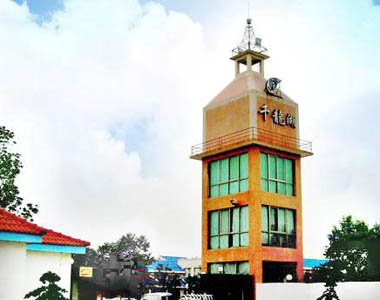
Thousand-Dragon Ecosystem Vacation VillageThousand-Dragon Ecosystem Vacation Village is located at Getang Town, Wangcheng County, and it is 30 kilometers from Changsha City. The vacation village was built in 2002, and opened officially on July 1, 2004. It covered an area of 3,066 mu. There are 8 facilities which cost 180 million RMB: hotel, conference center, fishing pond, water sports center, leisure zone, fish feeding, vegetable land and young trees center. Hotels hold villas, luxurious and standard rooms, and altogether there are over 3,000 beds, and the hotel can hold the largest capacity of 800 people to have dinner.The vacation village has won prizes such as “national scenery zone”, “agriculture tourism experiment”, “international dragon-boating race standard zone”, “five-star eco farm”, “new 8 Xiaoxiang scenery spots”. In 2005, 2006 and 2007, China Wangcheng Thousand-Dragon Lake International Dragon-boating inviting contest, first and second Changsha Countryside Travel Festival, National Fishing Champion of 2007 held at this vacation village one after another. \"Thousand dragons are dancing with morning clouds, and the lake and the sky share the same color\". Thousand-Dragon Lake is a complex for business meeting, vacation and sightseeing. When you are at Bamboo Garden and view, you will find the lake is like a mirror. Dragon Poem House once held the evening party \"Taiwan, our family member\". Water restaurants hand down the cuisine culture of Xiang dishes. While when you play tennis, ping-pong and ride water bike and motor, you will feel young and energetic.The vacation village is becoming the countryside tourism engine within 3 years under the leadership and management of Mr. Chen Xinghua. This is Shangri-la for people.
Changsha & Zhuzhou & Xiangtan
2010-10-04 20:52
View:5813
-

Changsha Huitang Hot Spring,Huitang WenquanThe Huitang Hot Spring is located at the southwest of Ningxiang County, Hunan Province. It is one of our country\'s three big famous high temperatures compound hot springs. Huitang, in English it means \"grey soup\", is nominated from the vapour rising out the spring. Huitang Hotspring in Ningxiang County has a history of 2000 years. The water is transparent and clear and the spring water temperature reaches as high as 89.5 degree centigrade and has 29 types of minerals that are beneficial to the human body. It has always been regarded as \"natural medical hotspring\".The hot spring area is 8 square kilometers and is rich with water volume resources. At present, the area has been developed on initial stage. The daily water supply is 3,500 tons, with almost 10,000 tons of hot spring water pending for development. The Huitang hot spring has advantageous resources and has broad development prospect. The Huitang scenery is beautiful and with good vegetation. There is the Dongwu Mountain near the hot spring; the mountain valley is profound and the spring water is rill. It is a rare place with its pleasant natural scenery and joyous countryside scenery. In the ponds near the hotspring, there herds fishes and ducks, which are quite delicious. They are called \"Tang Fish\" and \"Tang Duck\" and were tributes to the emperor in Ming and Qing Dynasties.Traffic GuideName:Changsha Huitang Hot Spring (Huitang Wenquan)City:ChangshaAddress:Ningxiang CountyAdmission:FreeTel: 086-0731-87299229 How to get there: In the West Bus Station of Changsha City, there are regular bus to Huitang Village,and the morning shift starts at 6:20 AM. One can take bus from Changsha City to Ningxiang County and then take another bus to Huitang Village.In Ningxiang County every 20 minutes from 6:20 AM there a bus to Huitang.The buses to Lianyuan and Shaoshan also pass Huitang.
Changsha & Zhuzhou & Xiangtan
2010-10-03 21:00
View:6810
-
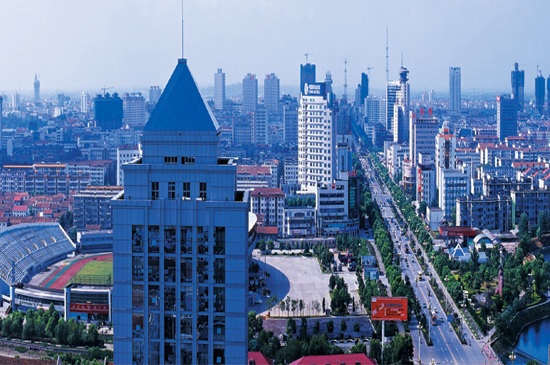
Located in the northwest of Hunan Province, the city of Changde is adjacent to the vast Dongting Lake on the east, lies within easy access to Yiyang City to the south, is connected to the Wuling and Xuefeng Mountains to the west, and borders Jinsha and Yichang to the north. Due to its advantageous geographical location, the city was historically called “the throat of Guizhou and Sichuan and the gateway of Yunnan and Guizhou”. Previously it was called Changde Prefecture, and it was renamed Changde City by the State Council in June 1986. The jurisdiction of Changde covers Wuling District, Dingcheng District and six other counties including Hanshou, Taoyuan, Linli, Lixian, Shimen, Jinshi and Anxiang. Jinshi city is governed by Changde on behalf of the Hunan provincial government. Changde has an area of 18,200 km2 (116 km2 urban) and a total population of 5.87 million (500,000 urban). The city is both historically important and contemporarily famous. As an ancient city, Changde boasts a unique feature. According to scientific research, there were human beings inhabiting here some 8,000 years ago. It lay in the area of Jinzhou, one of the nine regions at the time of the Xia, Shang and Zhou Dynasties. It was the central area of Chu and Qian in the Warring States Period, while in the Qin Dynasty it belonged to the central county of Qian. It was called Wuling County in the Han Dynasty and named Langzhou in the Sui Dynasty, and Dingcheng in the Song Dynasty. In the 7th year of the Song Dynasty under Emperor Huizong (1117 AD), Changde County was established, and in 1165 AD (the first year of Song Emperor Xiaozong), it was upgraded to be Changde Prefecture. The name of Changde has been used ever since. Changde has produced many important figures in Chinese history. Many fine works of literature praising the beauty of Changde’s landscapes have been written here by many historical masters like Qu Yuan, Tao Yuanming and Liu Yuxi. In contemporary times, a group of important people and revolutionaries emerged from here, including Lin Xiumei, Jiang Yiwu, Song Jiaoren, Lin Boqu etc., and literary celebrities such as Ding Ling, and Jian Bozan (former president of Beijing University). History has given Changde both unique natural scenery as well as historical sites. At present, more than 500 relic sites from the Paleolithic and Neolithic Eras have been discovered. Among the 276 specially protected relic sites already discovered, 15 are of national value and 14 of provincial value. Located in this beautiful land are three national forest parks, three provincial forest parks, one nature reserve, and one provincial tourism area. Taohuayuan Resort, a well-known historical resort enjoying fame at home and abroad, has become a modern place of sightseeing where people enjoy the beauty of nature in a unique setting. It is worth mentioning that Changde Poem-engraved Wall, designed on the basis of displaying many famous poems and articles by ancient and modern celebrities and created with the expert help of a group of famous Chinese calligraphers, painters and carvers, adds a new cultural view to modern Changde.With great potential in natural resources and considerable strength in its modern economy, Changde City enjoys pleasant weather and multiple landforms. The Yuan River and the Li River, admitting different sources of water, run through the districts and counties in Changde. The city is home to some 2,472 types of animals and plants, including 24 types of rare animals. Among nearly 100 kinds of minerals, the reserve amount, quality and yield of realgar rank number one in China. The yield of salt, gold, gypsum, bone coal, quartz sand and bentonite are on the top in Hunan. In addition, reserves of silicon sand, gypsum, marble, granite, barite, diamond, talc, ground phosphate rock, soft coal and bone coal are abundant in Changde. Since the liberation in 1949, and especially since the implementation of reform and free-market policies, the people of Changde have grasped the opportunity to open and develop the region. Coupled with a strong agricultural base, Changde’s economy has been increasingly strengthened. As one of China’s main areas of grain and cotton produce and the biggest producer of grain and cotton in Hunan, Changde has built an export-oriented agricultural economy. At the same time, it has formed an industry with unique characteristics: major local industries include tobacco, food, textiles, electronics, chemicals, construction materials, bamboo and special cement. Over 400 products, including Gold Lotus series cigarettes, Wuling Wine, Deshan Liquor and Special Cement, have won the title of “High Quality Commodity” awarded by the State, Ministries and the Province. They are marketed nationwide and some of them have even penetrated the international market. The city also organises local business fairs that are adequately distributed between urban and rural areas. Numerous modern hotels, guesthouses, department stores and recreational centres have been built to provide excellent services. The annual business volume at the Qiaonan Market alone has reached more than 11.5 billion Yuan. Changde’s high-tech industries are also promising. In recent years, Changde’s infrastructure has been improved daily, and development prospects are becoming more attractive to investors. A local 3-dimensional transportation system has taken shape incorporating aviation, rail, road and waterways. The 4C level airport where Boeing 737 and 757, Douglas 80 and 82 planes can land and take off has opened seven flight routes to Beijing, Shanghai and Guangzhou, etc. Two major railways, the Zhicheng-Linzhou Railway and the Shimen-Changsha Railway, pass through Changde City connecting to the Jiaozuo-Zhicheng Railway and the Beijing-Guangzhou Railway. By building the Yuan River Bridge, Li River Jinshi Bridge, Li River Shimen Bridge and Anxiang Dajingang Bridge, the Yuan and Li Rivers have become traversable waterways. The widened and reconstructed National Highways G207 and G319 connect all major regions and lead to 8 other provincial routes. By the end of 1998, an expressway from Changde to Changsha had been open to traffic. The total length of accessible land roads and waterways in Changde is estimated to be more than 6,200 km and 2,400 km respectively, and the 36 docks along the Yuan and Li Rivers have a total capacity of 10 million tons per year. Both passenger and freight ships can now sail directly to the Dongting Lake and the Yangtze River from Changede. Local power stations can generate 1.4 million kw of electric power to meet demands in the urban and rural areas. The Shimen Thermal Power Station, with the largest generating capacity in Hunan, is now in operation. Being the first of its kind in Hunan, the station’s first stage has been completed and is now in operation. Changde has installed a total number of 135,000 advanced digital telephones that link towns and factories, and connect Changde to 180 foreign countries. Mobile telephone services are available in Changde’s nine districts and counties. Combined with its constant urban expansion and improved management, the city enjoys tidy and clean streets (about 100 km in length), and has ample water and electricity supplies. It also provides complete services in banking, consultation, auditing, notarization, law, commodity inspection and customs. Changde is an inland city, but its geographical location makes it a great gateway to the interior. Its development has now been greatly contributed by the famous Three Gorges Project in the neighboring Hubei Province. Changde has become a frontier city connecting the Three Gorges to Hunan Province, which will in turn help in opening up and developing Hunan Province.Changde is embracing new opportunities with further reform and development in line with the construction of a harmonious society. We warmly welcome friends at home and abroad to visit Changde, invest in our local economy, and work together to develop a bright future.
Changde & Yueyang & Hengyang
2010-03-19 18:48
View:13487
-

Changde Railway Station is located at the end of Wuling Road. Passengers from here can reach many big cities such as Beijing, Shanghai, Luoyang, Guangzhou, etc.
Changde & Yueyang & Hengyang
2010-03-16 19:26
View:3524
-
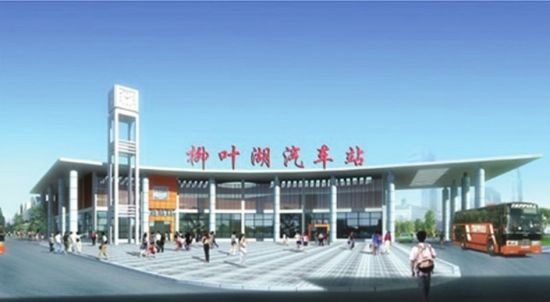
The construction of Liuye Lake Bus Station began in 2008, and it went into service in September 2009. Adjacent to the Liuye Lake and National Highway 207, it is a first-class bus station covering an area of about 50 mu with a total investment of 40 million Yuan. There are supermarket, a passenger lounge, a smoking room, drinking fountains, WC and a large TV screen for passengers to enjoy. Additionally, to offer more convenience to passengers, there is also a place for you to keep your small articles, as well as easy-access facilities for the disabled. The Bus Station, comprising 28 routes, enables you to get to 2 provinces, 3 cities and 10 counties. Each day, 531 buses meet the average transportation capacity of 10,000 people.
Changde & Yueyang & Hengyang
2010-03-15 19:35
View:3733
-
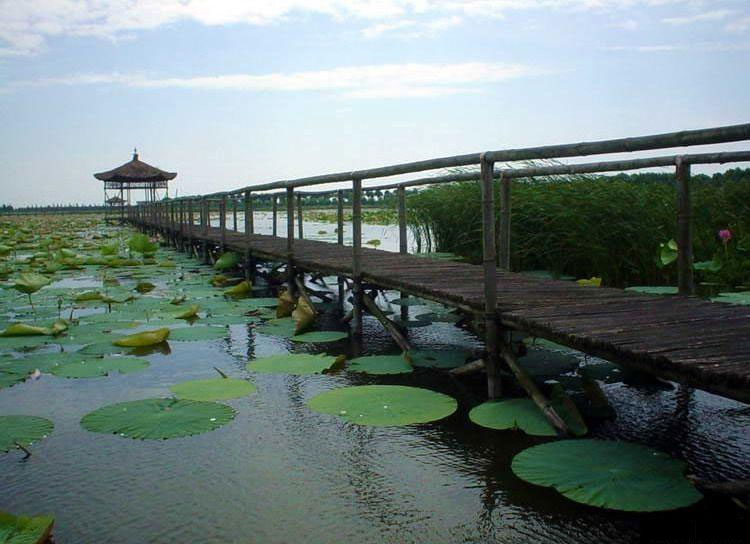
Xidongting Wetland is located in the eastern part of Hanshou County, Hunan Province. It covers an area of 35,680 hectares and it is the entrance to the Dongting Lake, China’s second largest freshwater lake. It is the bridgehead of the golden tourist route of Changsha-Zhangjiajie, only a hundred kilometers east of Changsha, 40 km west of Changde, and about two-hours drive from Zhangjiajie. In 1998, as approved by the Hunan Provincial Government, it was established as a provincial nature reserve. In 2002, it was included by UNESCO on the “List of 30 Wetlands of International Importance”. In 2005, it was designated by the National Ministry of Construction as one of 9 National City Wetland Parks. In 2008, it was granted the title of National AAA Scenic Spot by the National Tourism Bureau. Xidongting Wetland is like a natural maze. There are abundant waterways and various islands with endless reeds together with a rich production of fish and rice. It is also known as a biological gene bank because it is the habitat for 416 different wet plants, 217 species of birds, and 118 species of fish. It also boasts a profound cultural influence as it is the birthplace of the Canglang Culture. Qu Yuan, the ancestor of Chinese Yongwu Poetry, once lived here and created many verses to honour the Dongting Lake, as did other men of letters, providing many local legends and a rich local mythology. Within the wetland there are more than 30 eco-tourism attractions and 4 cultural spots. It is becoming ever more popular among tourist agencies and travelers alike. The Changsha-Zhangjiajie Expressway passes through this area with two exits at Junshanpu and Taizimiao. There is a county level railway station at Taizimiao on the Shimen-Changsha Railway. The No.319 National Highway and S205 Provincial Highway run through this area eastward and southward respectively. It is also within easy reach of the Huanghua International Airport (1 hour away) and the Taohuayuan Airport (40 minutes away). It provides waterway transportation which can reach many other places via the Dongting Lake.
Changde & Yueyang & Hengyang
2010-03-13 19:50
View:5074
-
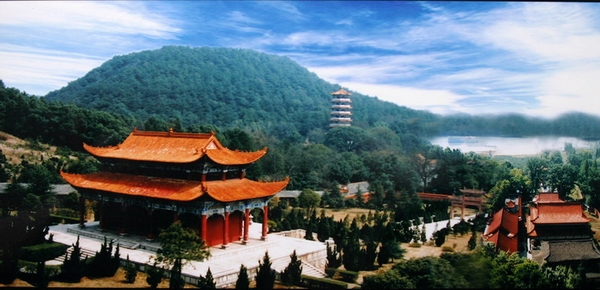
The Jiashan Mountain Scenic Area stands in Jinshi County located in the Northwest of Hunan Province. It consists of 4 sections, namely, Jiashan Mountain, Xujia Lake, Shiling-Qingshan Scenic Area and Gucheng Scenic Tourism Town, covering an area of 17.35 km2. As the core scenic spot, Jiashan Mountain is located at the edge of the Wuling Range, with the Dongting Lake to the East, Li River to the West and an idyllic countryside area to the South. Jiashan Mountain occupies an area of 2 km2 with a height of 147.07m. About 0.5 km South of Jiashan Mountain lies the birthplace of Mengjiangnv. According to accounts in the “Story of Mengjiang Mountian” written by Quo Qing in 1867 (the sixth year of Emperor Tongzhi’s reign), Jiashan Mountain was called Cuilu before the Qin Dynasty. After a long trek searching for her husband (Fan Xi), Mengjiangnv failed and cried at the Great Wall. The Great Wall collapsed before her and Meng recognised her husband’s skeleton by shedding her blood. She decided to return to their hometown with the bones but died at Tongguan, Shanxi. The local residents were so moved by her story that they decided to rename their town Mengjiang Mountain, commonly known as Mengjia Mountain. During the period of Emperor Hongzhi in the Ming Dynasty (1488-1505), Li Rugui, the minister of two major departments at that time, was a Lizhou local. Mengjia Mountain was renamed Jiashan Mountain (the Chinese character Jia means “to praise”) by Li Rugui to honour Mengjiangnv. Jiangnv Temple, or Jiangnv Shrine, was built there by other people. It consists of more than 30 houses, with an Entrance Hall, Main Hall, Back Hall and Temple Hall. The Temple experienced destruction and underwent reconstruction many times. In January, 1954, it was laid in ruin after a fierce fire. In the front of the Temple, there was ‘Wangfu Platform’ (a platform used to long for Meng’s husband) and a ‘Mirror Stone’. The well on the Southern slope of Jiashan Mountain is also famed to be a spectacular scene, having existed for a thousand years with constant fresh water. It is said to be the place where Mengjiangnv was bathing as Fan Xi hid behind a tree and peeked at her, after which they became married. This well was thus named the ‘Bathing Well’. Legend has it that lovers can be blessed and have children if they drink water from it. Jiashan lies between Changsha and Wuhan and thus enjoys a unique advantage in terms of transportation links. The Xiangbei Expressway and Taiyuan-Macau Expressway (to be constructed) pass through Jinshi County. It connects the Shimen-Changsha Railway and Zhicheng-Liuzhou Railway. Taohuayuan Airport is also only 80 km away from Jinshi City. Near the city is the Li River, which runs eastward to the Dongting Lake and boasts one of the six major ports of Hunan Province. It is navigable for 500-ton vessels all year round to places as far as Changsha, Wuhan, and Shanghai.
Changde & Yueyang & Hengyang
2010-03-12 20:05
View:4059
-

Liuye Lake Resort lies in the northeastern corner of Changde City proper. It is a harmonious integration of lake, city as well as hills. It has a planning area of 175 km2, in which water area occupies 21.8 km2. It is one of the largest city lakes in China. In ancient times, the belt-shaped lake was well-known for its beautiful scenery with the “willows on the bank swaying in the wind, songs of fishermen spreading from the boats on the lake, pine trees singing in the gentle breeze, and the lake framing a belt of water.” At present, it is recognized as “A Jewel of Hunan”, and “The Best Wonder of Changde”. It is also one of the “Best Natural Aquatic Sports Fields”, as wells as an “Urban Aquatic Paradise”. In 2001, the Liuye Lake was officially recognised as a national AAA tourism spot; in 2006, it was selected as one of the “New Top Eight Scenic Spots of Hunan”. After its construction, it hosted a series of important sports events, including: The Aquatic Sports Events of the Eighth Sports Meeting of Hunan Province, the Eighth Asian Kayak Championship, the All-Star Chinese and American Water Skiing Competition, and the First Short Track Rally of China, etc. Within the resort there are Baihe Hill, Huashan Hill, and Taiyang Hill, all covered with pine and fir trees, and islands in the lake shimmering like emeralds in blue water. Also, Yinyuan Garden, Wujianping Terrace and Mount Zhangjia, a graveyard since the Warring States Period, add a rich cultural atmosphere to the natural scenery. It enjoys convenient transportation links, only 10 km away from Taohuayuan Airport and a 10-minute drive from the downtown area from where tourists can reach all parts of China by train or bus.
Changde & Yueyang & Hengyang
2010-03-11 20:06
View:4761












